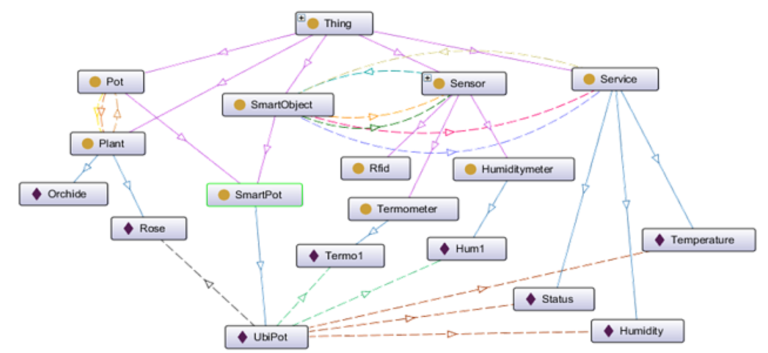Semantic communication through sentient visors
A key aspect in my Sentient Visors project was to allow intelligent communication and service discovery between the Sentient Visor and smart objects. Some problems we were trying to solve involved:
- How to identify services exposed by smart objects
- A way to define a formal representation of smart objects capabilities
- How to search for services matching certain criteria
- How to switch between different data representations
For this research I used semantic technologies applied to the Internet of Things. As a result, I used Ontologies to create models of information and knowledge representation for augmented physical spaces.

Along with ontologies, I used RFD metadata, SPARQL queries and SWRL rules to implement a reasoning engine for the Sentient Visor infrastructure. This reasoning component provided an intelligent service for the prototype system to execute semantic queries and switch between different data representations using the ‘semantic zoom’ metaphor.

Publication:
- Estrada-Martínez, P. E y García-Macías, J. A. 2013. “Semantic Interactions in the Internet of Things”. International Journal of Ad Hoc and Ubiquitous Computing. Inderscience Publishers. Vol. 13, No. 3/4, pp. 167- 175.